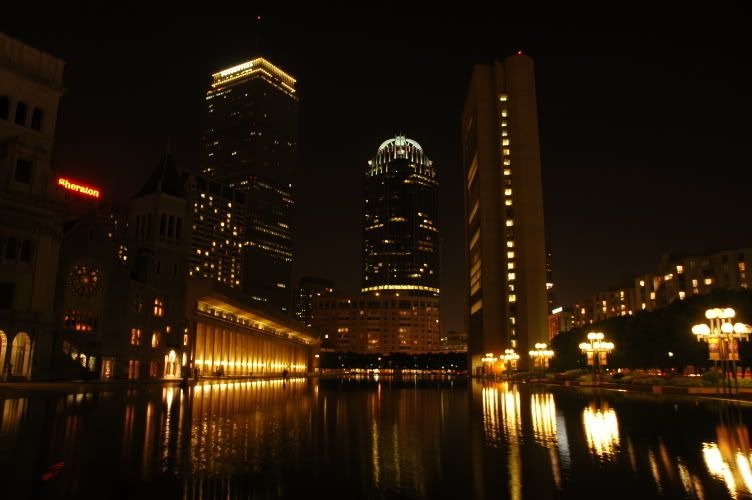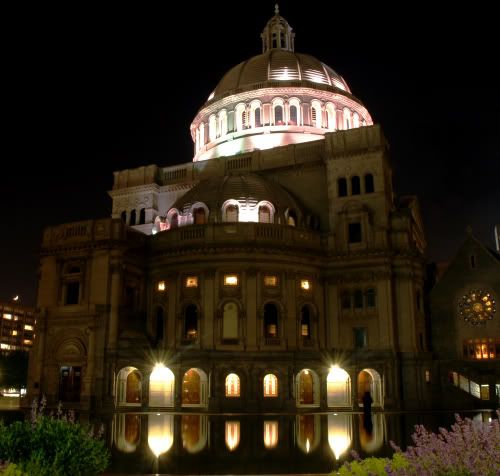I was wondering the same thing several months ago myself, Patrick. Fairly often, cameras in the price range of what you have will have at least a simple "Manual" mode, meaning you can control the shutter speed and the aperture (or how much light is allowed through to the sensor). I have just begun to experiment with car light exposures without knowing much about how to properly take them. I use an old 35mm film SLR camera from the early 80's, which takes gorgeous photos.
So one night on the Longfellow Bridge, with my tripod and camera set it up looking down onto Storrow Drive. I wanted maximum tail-light streakage without completely overexposing the entire frame. So, I closed up the aperture, set the shutter speed to bulb (allowing it to stay open until I let off the button) and held for 30 secs. This is what I was treated with (this is scanned print, not a scanned negative, so it looks like crap. The print itself is amazingly clear, but prints never scan well, ever. That horizontal light/dark line across the bottom 1/3 is a shadow from the footbridge, not a film problem):
I find its a delightful little insight of how Bostonian drivers find the lane lines around a corner mere suggestion.
This is where knowledge of what manual settings do comes in handy. First is shutter speed. The speed in the photo you posted, judging by how far the cars have moved in the frame is likely 1/2 sec. or so, if that. Then theres the aperture, or the blades within the lens that limit light. The smaller the aperture or f stop, or something including f, the more open it is allowing more light in, while the smaller the number, the less light is allowed in.
So, in my photo, I used an aperture, or f stop of f/22, the smallest aperture available on my lens. Like I mentioned, that allowed me to keep the film capturing car movement for a longer period of time without completely blowing out the whole shot with other light, like the lamp post.
So again, in reference to your photo, it likely used a small-ish aperture setting combined with that 1/2 sec or so shutter speed to capture the movement of the cars, the lights in the buildings all without overexposing any major portion of the photo.
I could go further in depth, but I have a way sometimes of saying more than necessary and find that it only caused confusion in the end. Basically, I guess I'm just saying check out your camera to see if it has a Manual or M setting and figure out how to use it.












